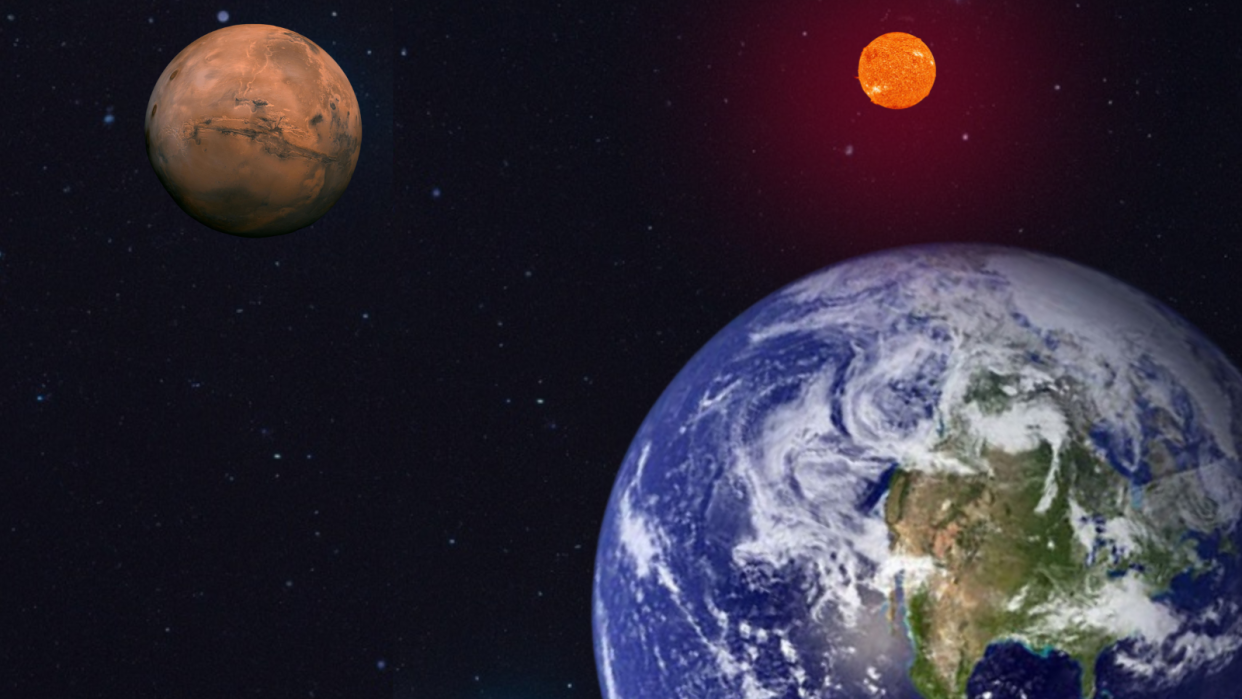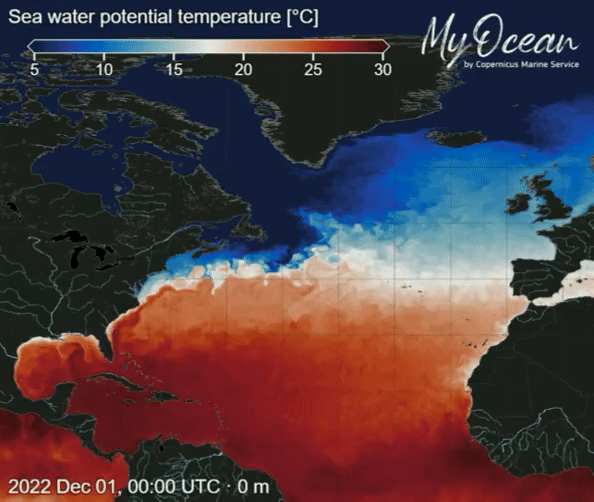Mars attracts: How the Red Planet influences Earth's climate and seas

Scientists have discovered geological evidence that the gravitational interaction between Mars and Earth drives a 2.4-million-year cycle of deep-sea circulation and global warming.
The surprising link between Mars and Earth's seas and climate sees deep currents wax and wane, and this connects to periods of increased solar energy and a warmer climate. The research could help reveal how climate change over geological timescales — not the type humanity is currently causing via the emission of greenhouse gases — affects the circulation of the oceans.
This knowledge could help researchers create better climate models in the future, study team members said.
Related: Water ice buried at Mars' equator is over 2 miles thick
Tracking ocean dynamics back to the age of the dinosaurs
The study team, led by University of Sydney scientist Adriana Dutkiewicz, set about investigating if ocean-bottom currents become more vigorous or more sluggish when Earth's climate is warmer.
To do this, Dutkiewicz and colleagues used half a century of scientific drilling data collected from hundreds of sites across the globe. This data allowed them to understand how vigorous deep-sea currents have been over the past 50 years.
To delve further back in time — around 65 million years, almost back to the age of the dinosaurs — they looked at Earth's deep-sea sediment record. This allowed them to check if changes in Earth's orbit were connected to sedimentary shifts. The team found 2.4-million-year cycles, or "astronomical grand cycles," that are linked to the orbits of Earth and Mars.
"We were surprised to find these 2.4-million-year cycles in our deep-sea sedimentary data," Dutkiewicz said. "There is only one way to explain them: They are linked to cycles in the interactions of Mars and Earth orbiting the sun."
Scientists have long been aware of astronomical grand cycles, yet they are rarely evidenced in Earth's geology.
Study co-author Dietmar Müller, also of the University of Sydney, explained how the orbits of Earth and Mars can cause shifts in the oceans.
"The gravity fields of the planets in the solar system interfere with each other, and this interaction, called a resonance, changes planetary eccentricity, a measure of how close to circular their orbits are," he said.
On Earth, this has resulted in periods during which our planet received more radiation from the sun, thus creating warmer climates. The 2.4-million-year cycles contained "breaks" in the deep-sea record, and these breaks indicate periods of more vigorous ocean circulation.
The team's findings indicate that the circular movement of water causing small whirlpools, or "eddies," in the oceans' depths was an important factor in the warming seas.
These eddies may have helped offset ocean stagnation, which many scientists predict would follow the slowing of Atlantic meridional overturning circulation (AMOC). AMOC is a vast system of ocean currents that carries warm water from the tropics to the North Atlantic Ocean. It is responsible for driving the Gulf Stream and maintaining warm climates in Europe.

"We know there are at least two separate mechanisms that contribute to the vigor of deep-water mixing in the oceans. AMOC is one of them, but deep ocean eddies seem to play an important role in warm climates for keeping the ocean ventilated," Müller said. "Of course, this would not have the same effect as AMOC in terms of transporting water masses from low to high latitudes and vice-versa."
These eddies often reach the deep ocean floor, also known as the "abyssal seafloor." Once connected to the deep seafloor, these huge whirlpools could cause erosion and create large snowdrift-like buildups of sediments called "contourites."
RELATED STORIES:
— Strange underground polygons on Mars hint at Red Planet's wet past
— Climate change has pushed Earth into 'uncharted territory': report
— Earth is getting hotter at a faster rate despite pledges of government action
"Our deep-sea data spanning 65 million years suggest that warmer oceans have more vigorous deep circulation," Dutkiewicz concluded. "This will potentially keep the ocean from becoming stagnant even if AMOC slows or stops altogether."
The team does not yet know how the interplay between the orbits of Earth and Mars and the ocean dynamics it creates could impact life in Earth's oceans in the future. Despite this, the findings could lead to more robust climate modeling and predictions.
The team's research was published on Tuesday (March 12) in the journal Nature Communications.
